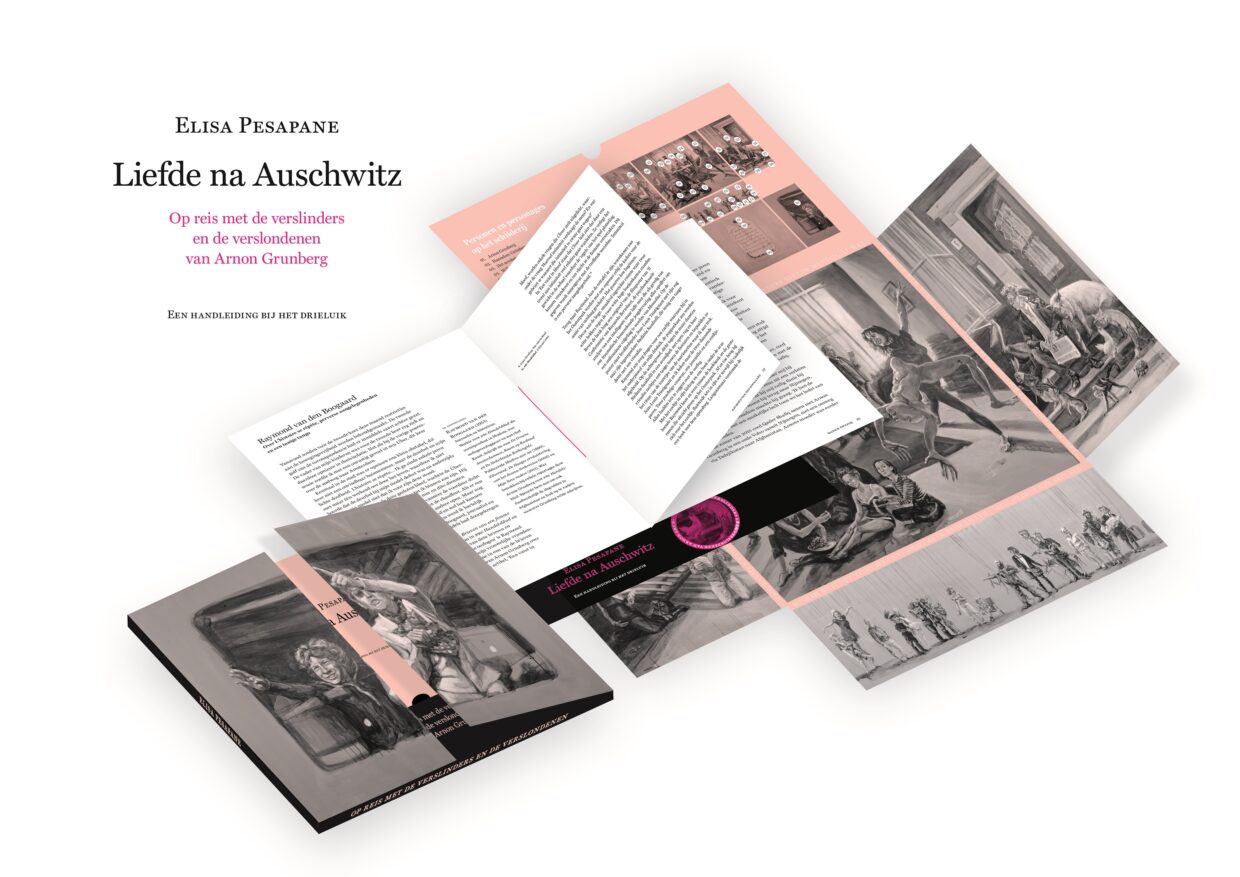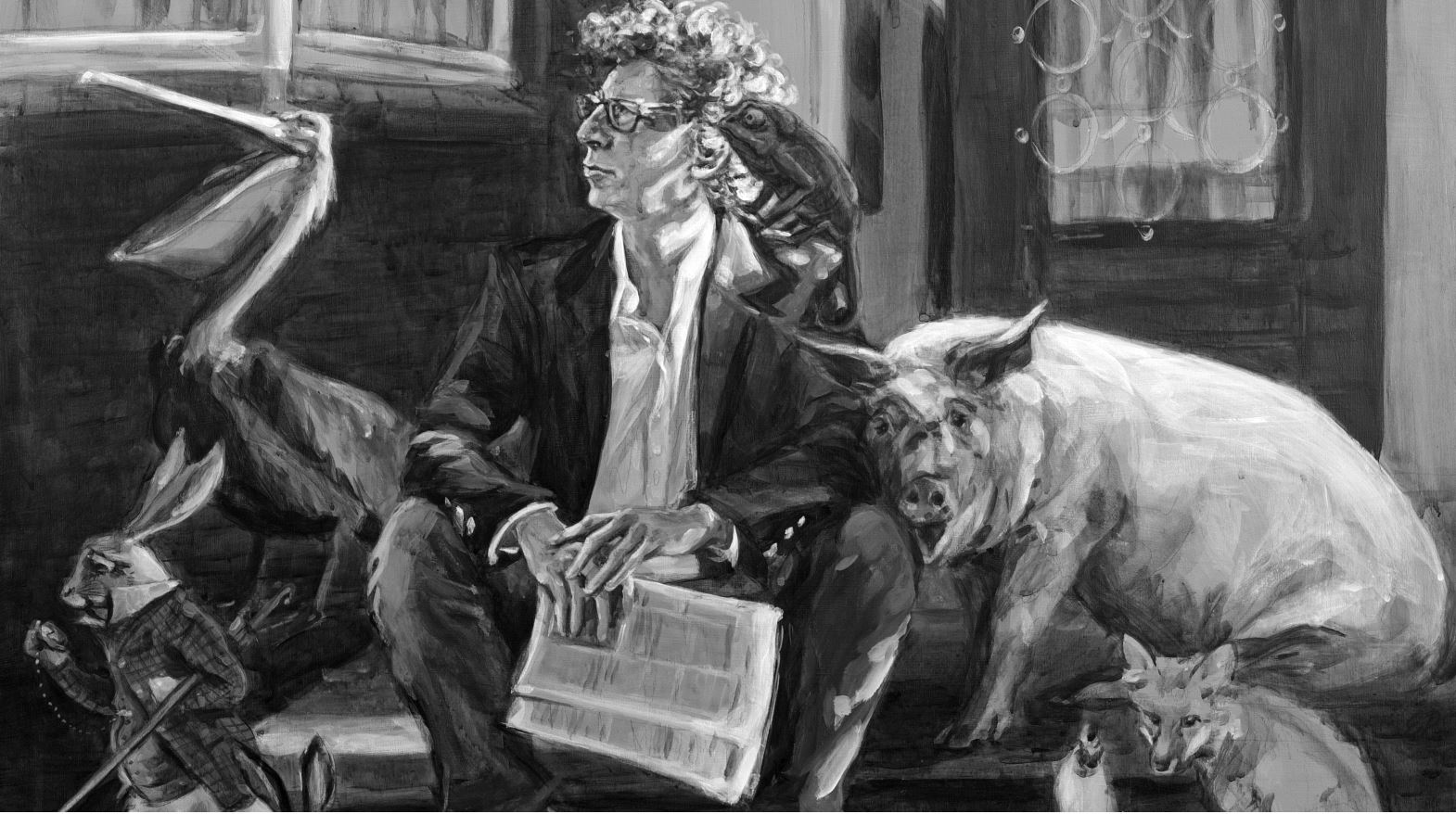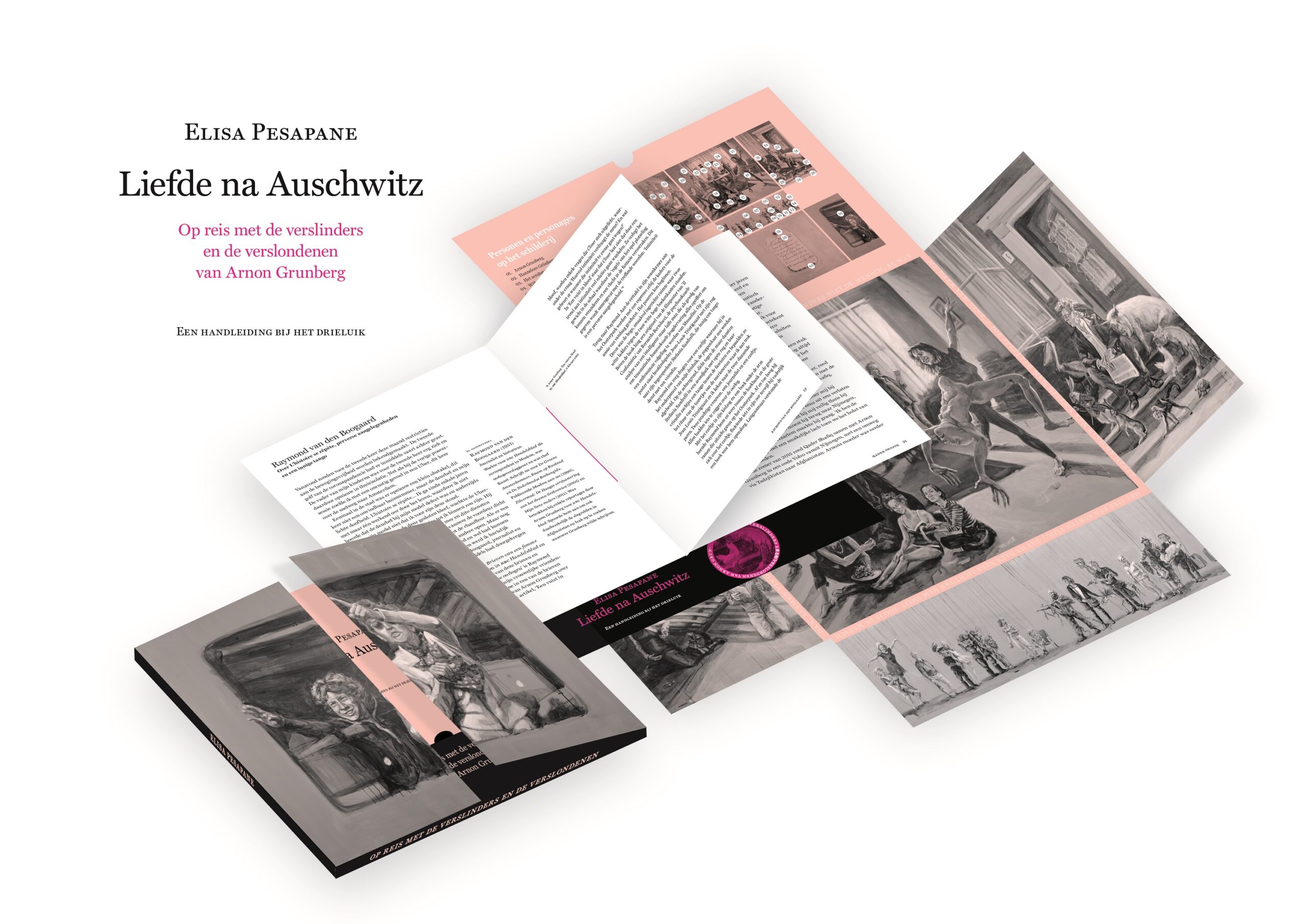Bestel hier uw exemplaar van het boek
Grunberg stimuleerde Pesapane om de verhalen van de ontmoetingen en poseersessies met de modellen voor het drieluik (personen die al eerder als personages in zijn literaire werk hadden gefigureerd en die, inclusief Arnon zelf, nu ook Elisa Pesapanes personages zouden worden) uit te schrijven.
Love After Auschwitz, Ehibition and book
Elisa Pesapane & Arnon Grunberg
A ‘gesamtkunstwerk’ of both a writer and painter for whom the first 50 years of Arnon Grunberg’s life and work served as material. Elisa Pesapane has not only painted a monumental triptych on wooden panel, but also written a book, the ‘user manual’ for the painting, that complement each other ‘Love after Auschwitz. A journey with the devoured and the devourers of Arnon Grunberg’
The Book and ‘User Manual’ for the Triptych
Grunberg inspired Pesapane to put down in words her travels for the project and tell the stories of the meetings with all the models included in the piece and who were to become, including Arnon himself, subjects within the piece.These tales show how thin the line between reality and fantasy can become when a storyteller pays you a visit.
The book ‘Love after Auschwitz. A journey with the devoured and the devourers of Arnon Grunberg’ is a miniature version of the triptych (including a legend containing the names of all the characters). Within this miniature triptych lies a book, the user manual for the painting, with an epilogue written by Arnon Grunberg. The book and miniature triptych were designed by Yolanda Huntelaar and Werkplaats Amsterdam.
Arnon Grunberg: “One could say that the title ‘Love after Auschwitz’ for a portrait of a writer and some of the people around him may sound somewhat heavy. But isn’t this the characteristic or maybe even the task of the writer to diminish the weight of our heavy burdens so that they can become bearable? In my opinion the visual artist can strive for the same.”
Commenting on ‘Love after Auschwitz’, WimWeijland, director of the Dutch National Museum of Antiquities in Leiden, said:
“With ‘Love after Auschwitz’, Elisa Pesapane has created a totally new genre. It is not the portrait of a an author but rather a visual biography of the life and work of a great author. Together they give shape to a totally new story in which the spectator is taken on a journey between reality and fantasy.”



